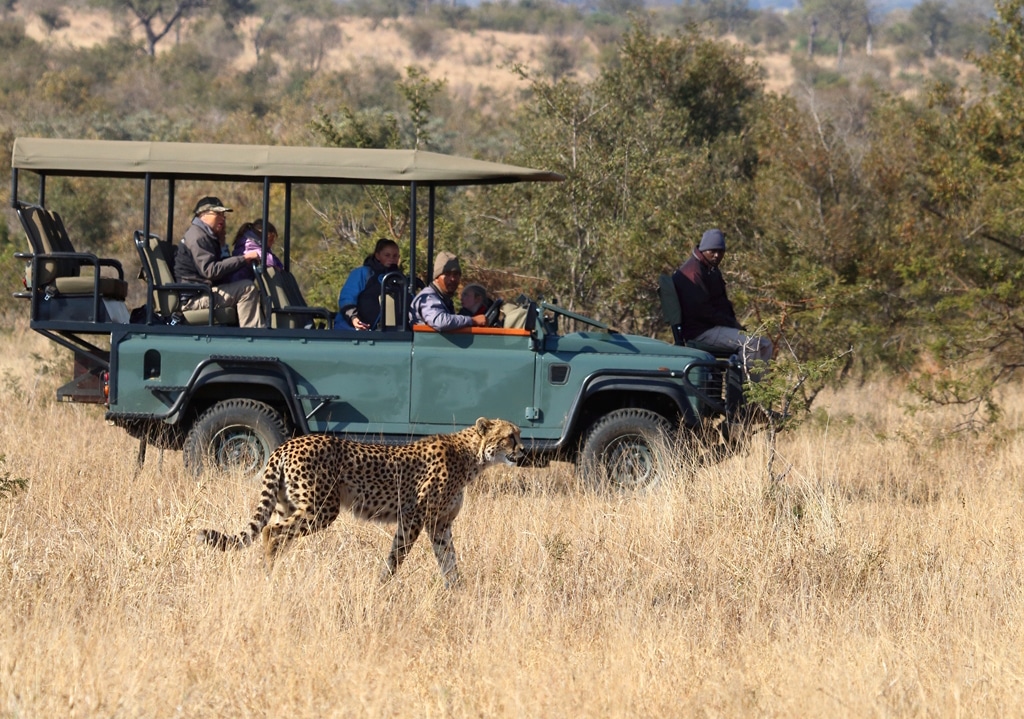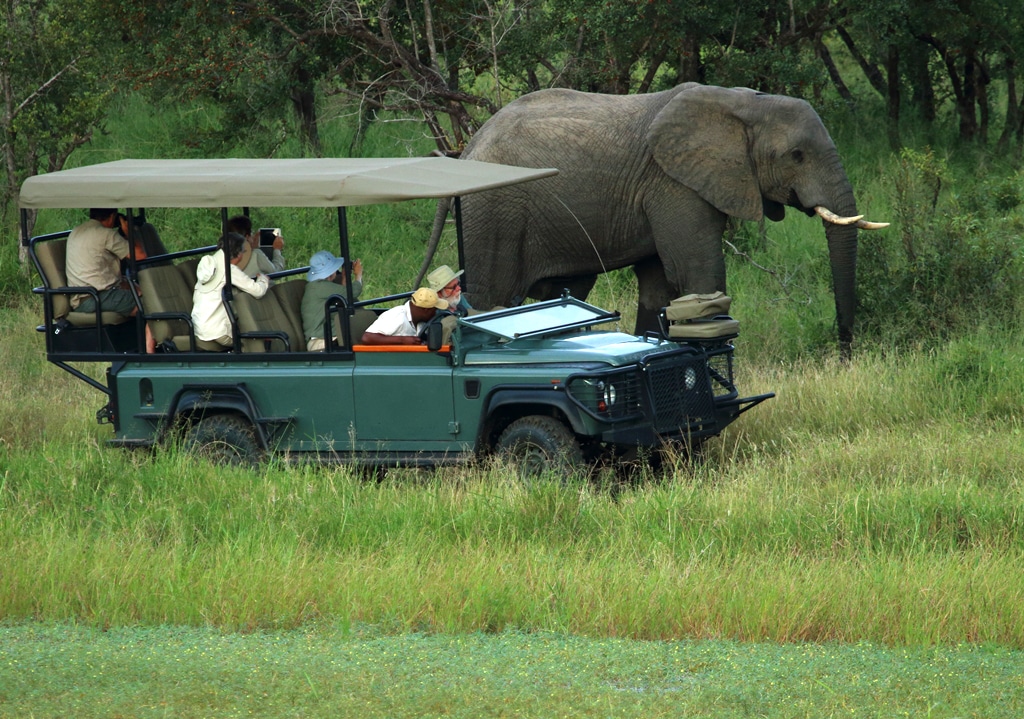What I Learned on Safari
/While I was posting a 3 part series of prepping for South Africa, I knew I’d be writing a follow up post about what I got right, and what I got wrong.
Here’s what I learned after three days, five game drives, a couple of nature walks, and many hours posted up in a “hide” near the watering hole while on “Safari” in Honeyguide’s Mantobeni Tented Safari Camp.1
Learning Curve
A lot of what follows only occurred to me after a couple sessions of shooting. In truth, before getting my XF 50-140mm F2.8 WR, the longest focal length I had used with any regularity was an 85mm on APS-C. I mostly use the XF 50-140mm F2.8 WR in a studio setting, so outside of practicing in my backyard on squirrels and birds as much as possible, shooting with lenses this long was a fairly new experience. Even the act of finding an animal you’ve seen with your eyes through a viewfinder at 200mm or higher can be tricky. In my limited time out in the bush, I got quite a bit better at it, but by no means am I proficient. I would need much more experience. You gotta start somewhere though, and the point is, if you’ve never done this kind of shooting before, get as much practice as possible, and expect a learning curve of your own.
Camera Bodies
The X-Pro2 faired well on the drives, and I could feel the performance boost it offers over previous bodies, but the X-T1 outclassed it in terms of operational capabilities. The tilt screen came in really handy at times when I wanted to rest the XF 100-400mm F4.5-5.6 WR on my Safari Sack beanbag,→ which in turn was rested on an armrest at thigh height as I was seated. Often animals were relatively still, and I wanted to lock focus on them, glance down at the tilted LCD on occasion, and otherwise watch the animals “IRL” so to speak, and burst 8 frames per second when I caught or anticipated a good expression from the animal. This is another thing that takes practice, lest you find yourself with dozens or even hundreds of frames to wade through in post, like I did.
Two X-T2’s would have been the best of both camera worlds in this situation, and would be my ideal body configuration, were I to visit another game park in the near future. I really wish that camera had been available before I left.
I opted for the battery grip on the X-T1, and would do with X-T2s as well. Not only was the grip convenient from a handling perspective, the extra battery gave me confidence I wouldn’t run out of power on a drive. As it turns out, I was overly cautious here.
Lenses
On my first drive, I brought my X-T1 with vertical grip and XF 100-400mm F4.5-5.6 WR attached, and my X-Pro2 with XF 16-55mm F2.8 WR attached. I figured this would be the right balance of coverage for my first time out to assess future drives.
What I found was the standard zoom was of almost no value, despite our driver getting us remarkably close to the animals. I don’t think I took a single frame with it that wasn’t zoomed in towards the top end of its focal range. Since that is covered by the XF 50-140mm F2.8 WR, I knew I’d be swapping the standard zoom for it on the next drive.
I didn’t even think about changing lenses during my game drives. I would have just been asking for a ton of dust on my sensor. I would recommend against lens changes.
Teleconverter
Given I had considered not even bringing the XF 100-400mm F4.5-5.6 WR, I decided to do the first drive without the 2× teleconverter. Reports indicate there is at least a bit of an optical penalty with the 2× teleconverter, and I’ve noticed that as well,2 but on our first drive, we were lucky enough to catch a pair of leopard cubs that I really wanted to get closer to.
From that drive on, my camera setup was the X-T1 with 2× teleconverter and XF 100-400mm F4.5-5.6 WR, and the X-Pro2 with XF 50-140mm F2.8 WR.
Batteries
If you’re judicious about turning your camera off when not in use, one battery per camera should get you through a 3 hour game drive just fine. I have no idea if that’s a standard duration, but the time of the drives seemed to work for capturing animals when they were active, and the best light of the day. After a drive, I’d get two batteries charging in this Watson Duo Battery Charger,→3 which I highly recommend. It’s a little bigger than I’d like, and I brought two Fuji chargers as backup, but it worked flawlessly, showed me how much charge my batteries had, and charged them up really quickly. You can even buy replacement plates for it and charge, say, an X-Pro2 and X100T battery at the same time. I travelled with a total of seven batteries, but I could have done the trip quite easily with five.
Accessories
All those beanbag recommendations you’ve read are spot on. I bought a Safari Sack before I left, and it was indispensable.
My Really Right Stuff Safari Clamp saw some use on the drives, especially during the time I needed to get higher than the beanbag would allow, and holding a camera with the XF 100-400mm F4.5-5.6 WR attached would get tiring. It turned out to be more useful at other times, like when my tripod was temporarily confiscated before getting on the boat to Robben Island. I would have been really bummed if I wasn’t able to capture a pano of Cape Town from the island, and there were plenty of railings near the water for me to clamp onto.
I was looking into a monopod as Thom Hogan suggests before my trip, but truthfully, I can’t think of a time when it would have worked much better than what I had, and it probably would have got in the way. Perhaps I could have extended it fully with it planted on the ground and hung out the side of the vehicle a bit more, but often things happened so fast there was barely time to “set up.” I was tossing my beanbag from one place to another, and at times forgoing it altogether to snap a frame before more active animals moved again. Plus, we were to remain seated during the drives, as the vehicle changing shape can (allegedly) alert the animals, and we had a canopy over us anyhow; two good reasons not to stand during the drive. In other parks, it seems you stand up, and in those instances, a monopod might be just the ticket. Depending on where I go, I may have one by the time I head back to Africa.
The repacement EC-XT-L Eye Cup→ for the X-T1 helped a lot in the bright sun. This isn’t something X-T2 users need to be concerned about, but if you are bringing an X-T1 or two, I would highly recommend buying a couple of these.
Other
As mentioned, you’d be nuts to have your sensor exposed during a game drive, but when we stopped for our mid-drive coffee/wine break, I would have been totally fine with a non-dust-resistant camera like an X70. I ended up using my iPhone for this, which was fine, but it’s not the same. I’m still not sure it would be worth hauling a second set of batteries/chargers, but worth considering. If a camera is in your bag, it won’t get affected by the elements.
Wishlist
I’d love for Fuji to release a 300mm or 400mm f/2.8 or faster WR lens that matches the optical quality of the XF 90mm F2 WR. The XF 100-400mm F4.5-5.6 WR is a superbly versatile lens, and is optically decent, but a fast prime would allow for lower ISOs on top of presumably being much sharper.
Closing
Apart from wanting a faster, sharper exotic lens and wishing the X-T2 had been released a little bit earlier, I don’t feel as though I was let down by my equipment in any way while on Safari. It was my own technique, and luck of the animal draw that had the biggest impact on my photographs. I may write a subsequent post detailing my learnings from such a big trip overall; what gear I used most, what, if anything, could I have left behind, etc.
As for the Safari experience itself, it was absolutely incredible, and something you really should try to do at least once if you have the means. Africa wasn’t even on our radar as a travel destination before this opportunity presented itself, and we couldn’t be happier it did. I don’t have a particularly large frame of reference, but family members who have been to a variety of game parks agreed that Honeyguide are a fantastic company. If you happen to visit, Fanuel is an extraordinary driver who will do absolutely everything he can to get you close to the animals in a way that still respects their wellbeing.
About the Image
X-T1 + XF 100-400mm F4.5-5.6 WR at 280mm
XF 2× TC
1/500 sec. at f/5.2, ISO 500
I chose this image of a female from a series of images because this one appears particularly wise; a fitting trait for a post about learnings. We were able to get incredibly close to about 5 female lions who were all mostly lounging around. This profile is from when one raised her head to give us a smell.
I started with a RAF in this case, despite working with a pre-X-Trans III. Sharpness wasn’t my primary goal here, and I wanted as much information as possible to run the image through Silver Efex Pro.4 I’m quite pleased with the result.
- Footnote review: You can’t go wrong with Honeyguide Tented Safari Camps. The lodgings were fantastic, the food sublime, and the animals plentiful. During our stay, trucks saw “the big five” in a single outing multiple times. Your mileage will vary, of course, but we were pretty fortunate, and I hope to return to that park one day. ↩︎
- Where I’m seeing it worst in reviewing my images is when focused at infinity on objects that are very far away, perhaps a kilometre or more. Closer subjects appear to be rendered sharper, but I’ll report back after further review. ↩︎
- Another product I plan to do a review on, but what I’ll say now is if you have an X100 or X70 along with your interchangeable lens Fuji camera, you can just buy a set of NP-95 plates along with the WP-126 Duo charger, and you’re good to go. I even had one of each batter charging ok in mine. Great stuff. ↩︎
- Still sad Google bought and abandoned the Nik Collection of software, but at least it’s free for as long as it runs. ↩︎












